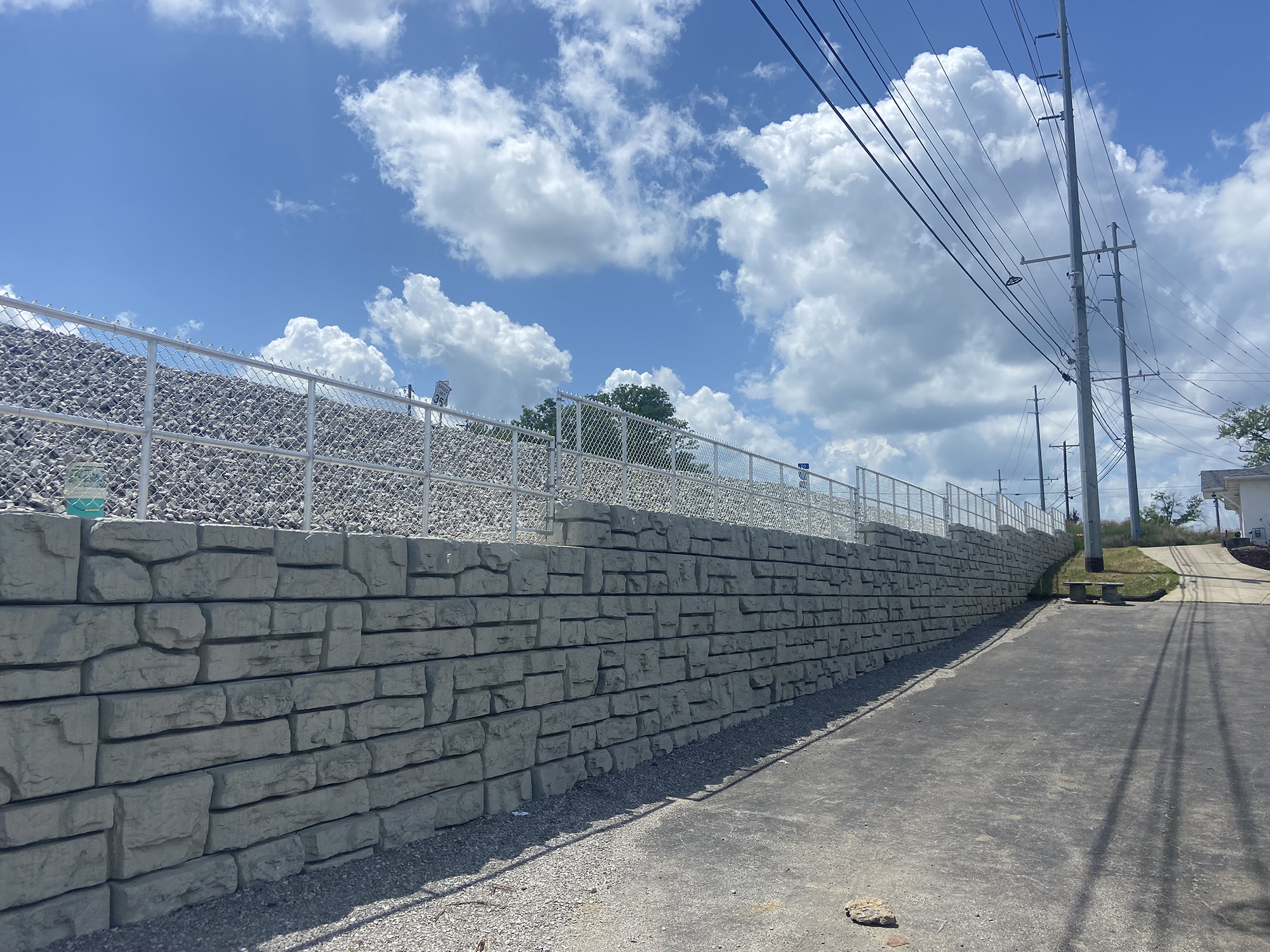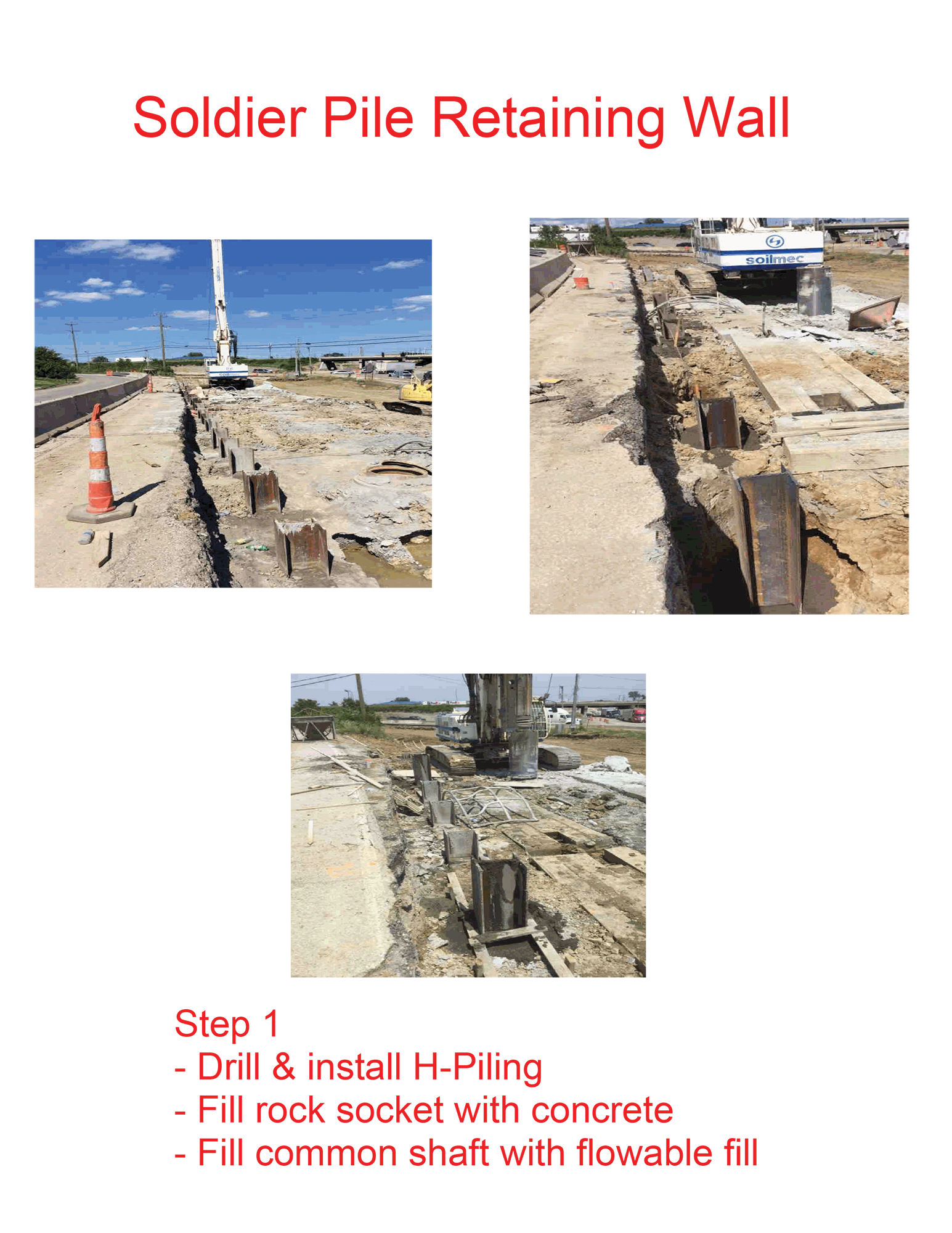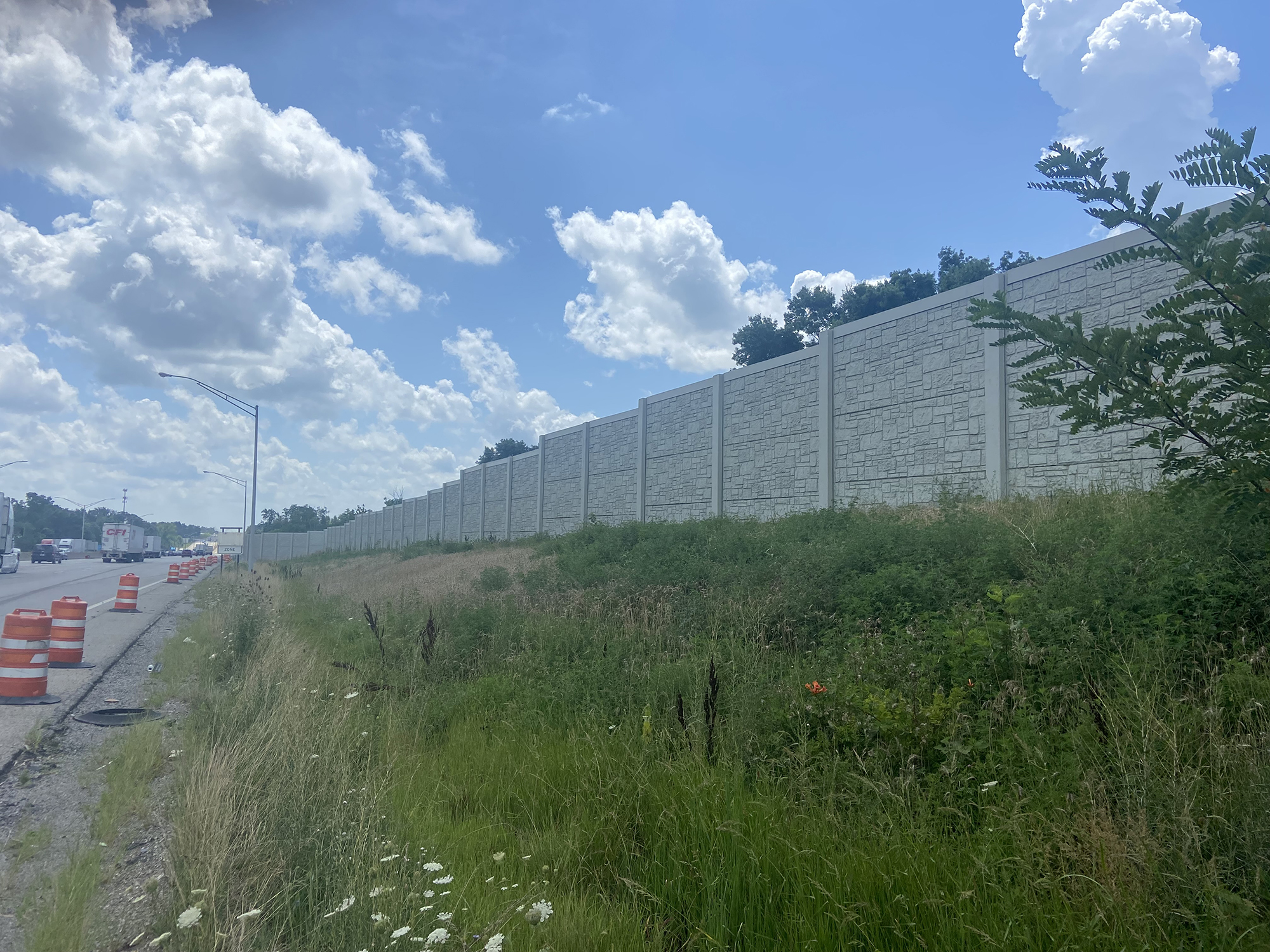Retaining walls are relatively rigid walls used for supporting soil laterally so that it can be retained at different levels on the two sides. The three types are Retaining Walls, Sound Barriers and Soldier Pile Retaining Walls. What are the differences? While each wall may look similar from the untrained eye, each type of retaining wall varies in the process of construction and installation, as well as purpose and benefits. Three main purposes of retaining walls include:
- Safety: to prevent soil collapse or erosion into roadways, railways, residential or commercial property. Retaining walls can also temporarily provide safety on a construction site to keep the workers and excavation site from collapsing in or prevent water from entering the site.
- Sound: Sound barrier walls are designed according to the decibel levels of surrounding industrial, commercial or traffic sounds. The walls are proven to significantly reduce the noise pollution for neighboring communities.
- Aesthetics: The retaining walls are built not just for functionality but to provide a visually appealing solution to safety and sound. Often the walls are built with precast panels with a form liner stamp, which is an aesthetic treatment on concrete panels to achieve the look of natural stone. The panels and block walls are created and customized according to job specifications by a third-party vendor with a pattern or stone appearance requested by the client.












